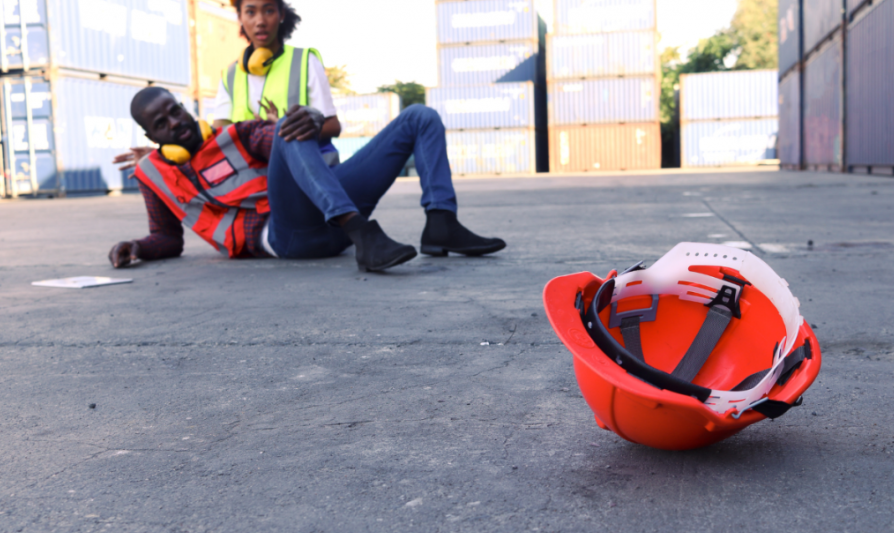Slip and fall. A term that is often used to describe when an individual slips and falls. As simple as it sounds, a slip and fall has the ability to cause serious injury. A National Floor Safety Institute study reports that slip and fall accidents are prevalent in just about all manufacturing and service sectors. What’s worse is that fatal falls are recorded only in a few sectors. Construction is one of them.

Fatalities aside, an individual may suffer some gruesome injuries due to slips and falls. Injuries to the spinal cord, brain, and head are sadly among the most common types of injuries in construction accidents. These injuries have lifelong implications for the victim. It is the duty of the victim to consult an experienced lawyer and punish the liable parties.
Slip and fall accidents are avoidable. This includes the one where you trip off a wire when you’re engrossed in your phone or when you slip off a liquid that shouldn’t have been there in the first place. Slips and falls at construction sites usually have much more severe consequences than those at other places. This is because a construction site is filled with elements that may either kill you or cause serious damage.
As said earlier, slip and fall accidents, especially those at construction sites, are avoidable. Here are six precautionary measures that you, as a worker, contractor, or supervisor, can follow to prevent slip and fall accidents at construction sites.
- Be Organized
A clean, organized worksite goes a long way toward avoiding accidents. Not only does the place look neater, but you also have fewer elements to trip on. Either report traces of dirt, debris, or construction material you find or remove them yourself.
Also, don’t forget to remove spills from the floor, especially in areas that are prone to heavy foot traffic.
- Conduct/Participate in Daily Walk-throughs
Just like how some corporate offices have pep talks at the start of each day, construction sites have a daily walk-through session. Usually, work-related elements are discussed in these sessions. Along with that, safety hazards are discussed as well. Be sure to participate in/conduct these walk-throughs. They give you an opportunity to discuss and report potential safety hazards at a work site.
- Fall Protection Equipment
OSHA guidelines state that fall protection equipment must be provided for those who are working at elevated heights. It is the responsibility of the employer/supervisor to provide and care for all the fall protection equipment on a construction site. They must also conduct regular inspections to make sure that the equipment is in working condition.
- Proper Training
There are multiple hazardous elements on a construction site. An individual requires adequate training to
- Conduct themselves appropriately
- Use and handle equipment
- Identify safety hazards
- Report safety violations
Employers must make sure that workers undergo the required training before permitting them onto a construction site.
- Planning
Having a proper plan in place will go a long way toward the smooth completion of a task. The same applies for construction sites as well. Employers must make foolproof plans that will ensure the safety of workers working at elevated heights while completing the job efficiently. Employers should also include the cost and maintenance of fall safety equipment when preparing an estimate.
- Encourage Reporting
The saying “snitches get stitches” doesn’t apply to construction sites. Report any safety hazards you find immediately to your supervisor. If the safety hazard is at a place/equipment that is frequently used, use measures to warn people about the hazard. Even the smallest effort goes a long way toward preventing life-altering accidents.
Final Thoughts
Slip and fall accidents at construction sites have the potential to cause injuries that may cripple someone or take their life. Sadly, just following safety practices isn’t sufficient. It is the responsibility of everyone on the construction site to keep an eye out for safety hazards and report them immediately to avoid accidents.
